Integrating Active Shooter Scenarios Into Your Emergency Drills
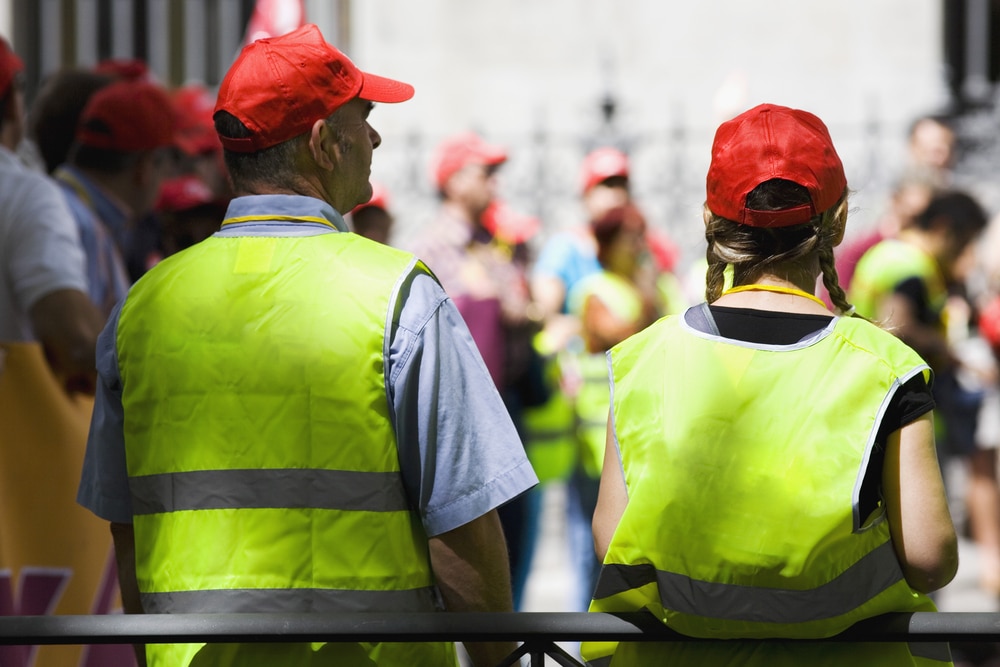
Learning how to stay safe in active shooter situations is part of living in today’s unpredictable world. When it’s better to be safe than sorry, preparation is a critical aspect that can make all the difference.
From response strategies to active communication channels, every person has a part to play until law enforcement arrives.
Here’s everything you need to know about response protocols and how to survive an active shooter incident, whether in the workplace or a classroom setting. The most important things are to remain calm and respond effectively to help save lives.
If you need employee training on active shooters we have an entire course.
What Is an Active Shooter Threat?
An active shooter threat is a situation in which an armed individual actively engages in violence with the desire to harm and kill as many people as possible before law enforcement arrives on the scene. They actively participate in violence, likely through the use of firearms.
These attacks are terrifying, to say the least. They unfold quickly, often without much warning, and require a comprehensive response plan to survive. These active shooter situations can occur in offices, construction sites, and any other business area that you can think of.
Be it workplace violence over a lost job, continuous harassment, or an active shooter event at a school from a student struggling with mental health, these horrific events can escalate quickly.
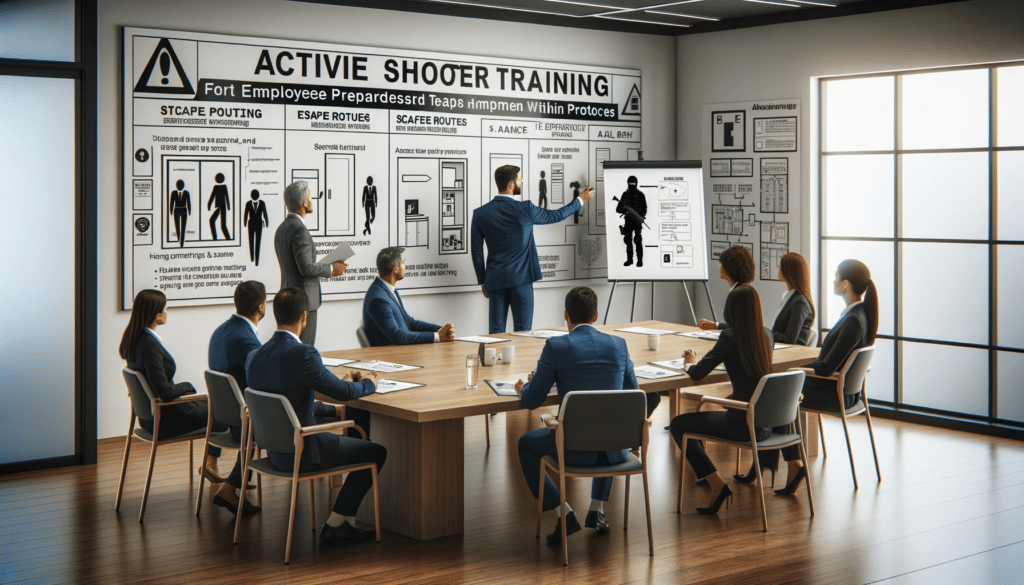
What Is an Active Shooter Drill?
Active shooter training includes running drills, either at work or in the school community, to help by preparing students and employees to face a dangerous situation.
Similar to fire drills, active shooter drills are just another variety of safety drills meant to inform and protect against an individual actively engaged in gun violence.
However, these drills are not without controversy. Some argue that the likelihood of these events is so minimal that it’s not worth inflicting trauma upon others and that, therefore, it’s in the best interest to protect employees and students by not holding active shooter response training and drills.
The truth is no one wants to be caught unprepared and be at risk. A proactive approach is best, as it prepares students and employees with critical information so that they can make informed decisions if they find themselves in such situations where their lives depend on it.
What Is Active Shooter Response Training?
This training involves drills for how to be well prepared in an active shooter event, but also how to respond effectively and minimize harm overall. First responders are likely to be on the scene shortly after the initial event is reported, but by then the shooter may have already begun to kill people.
A comprehensive approach to a drill shows all sides of the event, from what to do if you’re present when it begins to hiding as one of the last few to find out. Safety is the utmost priority, and lockdown drills should ensure safety for students and faculty alike.
When schools conduct active shooter drills, they must respond effectively to safety concerns and prepare students and staff members for the scenario in which they will have to fight for their lives in an active shooter event.
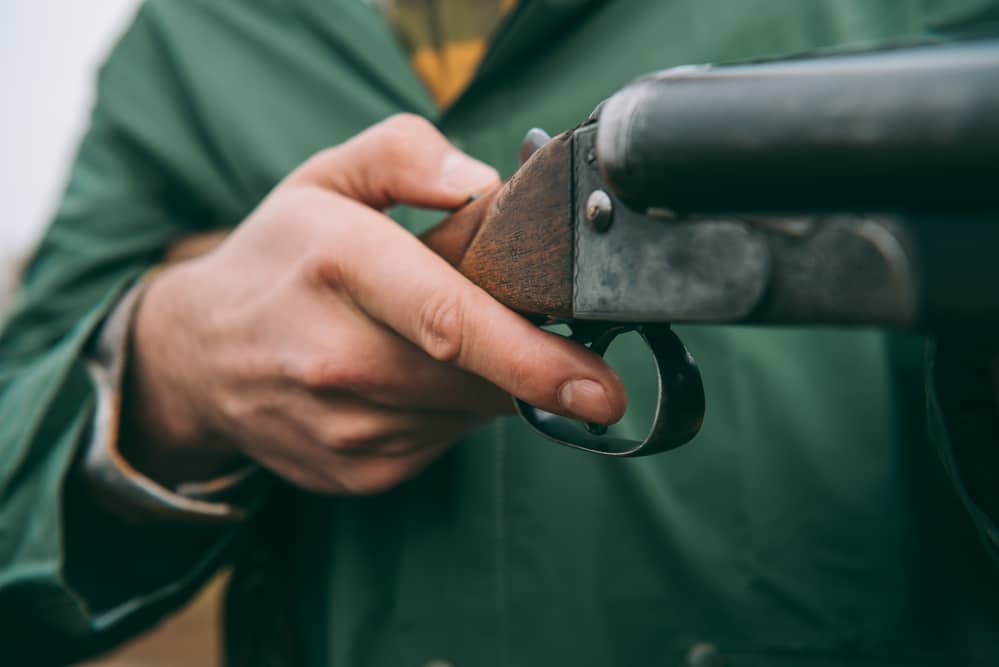
Understanding Active Shooter Incidents
Local law enforcement advises that active shooter situations are not to be taken lightly. Having a response plan will save lives, and the primary objective should be to minimize harm overall. Potential threats cannot be underestimated and must be taken seriously.
Any populated area on campus can quickly become a threat to individual’s safety, especially when active shooter events unfold. Schools’ security teams can do a great deal, but once a traumatic event unfolds, it’s only a matter of time before it spirals out of control in any given environment.
It’s essential to remain calm, follow actions and orders given by local law enforcement, and stay safe.
How to Run Effective Active Shooter Drills in the Workplace
To prepare an effective active shooter response plan, you’ll need to collaborate with first responders and law enforcement to hold a debriefing session on best practices and how to survive these encounters. From there, schools and workplaces must validate the students’ and employees’ concerns over safety drills and training.
There are three components that make training effective overall. Additionally, it’s of the utmost importance to specify numerous times that the drill is only a drill and not a live situation. This can help avoid unnecessary trauma during an active shooter drill.
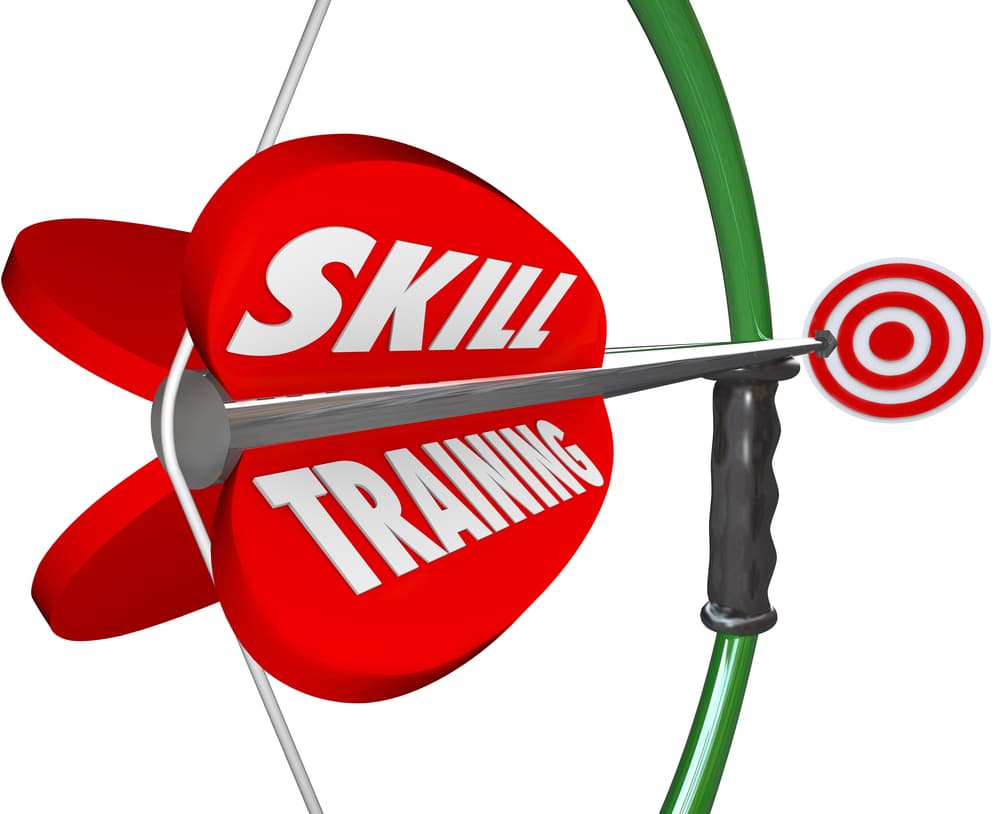
A Comprehensive Response Plan
Safety is more difficult to ensure without an established plan to follow. Schools should react to active shooter events with a detailed response plan to protect employees and students in the classroom and on campus. The importance of a solid plan cannot be underestimated.
Put Together a Threat Assessment Team
Your business should also assemble a threat assessment team so that you can understand your business’s vulnerabilities when it comes to an active shooter threat. Determining your weaknesses as a facility, can help you prevent a disaster active shooter situation.
Practice Active Shooter Drills
There are plenty of ways to handle an active shooter incident. Still, the most recommended approach is to get a physical description of the attacker in the environment, identify where they are, hide for safety, and run if you can get away safely. Having active shooter drills within your business can also help you prepare for a real-world scenario.
As a last resort, you can fight, but this is strongly discouraged unless you are in immediate danger.
Review And Debriefing Session
After running a drill, it’s important to go over what could have been done better and what the following actions are, whether that’s to improve security around the school community area at large or to identify areas of weakness within the drills or training.
These steps are crucial to take to prepare a response for an active shooter situation.
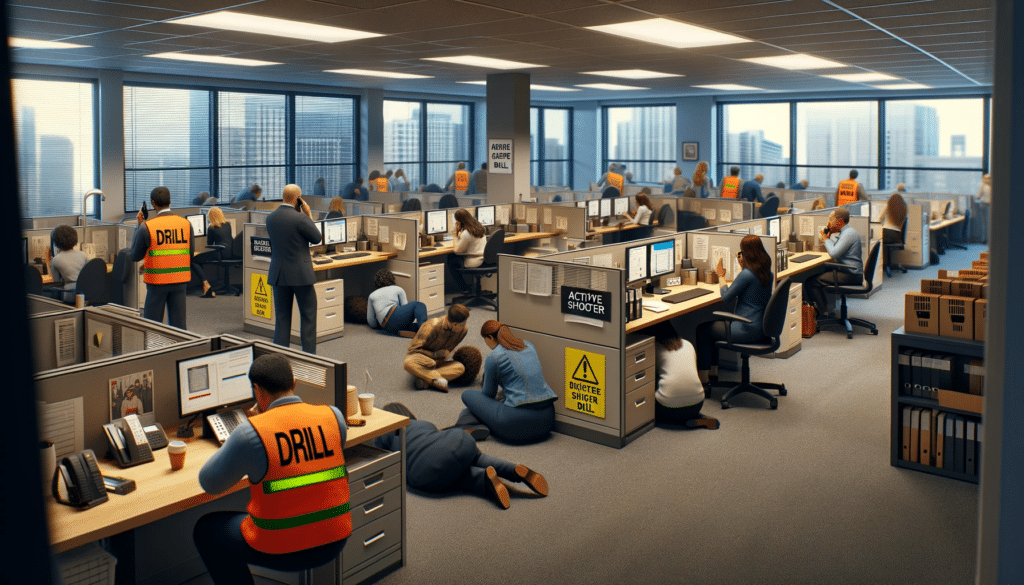
The Line Between Training and a Trauma-informed Approach
Students and employees are aware that an active shooter situation can unfold at any time. Drills are a crucial way to identify threats, curate a response, and verify that security protocols work as intended before truly being put to the test.
People should be able to opt out of such drills for the safety of their emotional well-being, especially if they have been in these situations before or if the drill would cause them major discomfort. However crucial these drills are, the primary objective is to educate, not traumatize.
A multi-option approach to this education is beneficial to all, from security to staff to students.
FAQ
There are many questions that arise when discussing active shooter incidents, whether that is about how to respond or how to increase your chances of surviving the encounter.
Here we provide answers that can help expand your knowledge of the subject and how to use crucial information in a dangerous situation.
Should you use an elevator in an active shooter situation?
In active shooter incidents, the best rooms to hide in are the ones near the elevators. These tend to have better infrastructure, making them safer to be in during dangerous situations. Unlike other rooms, they will be more supportive than just drywall.
However, your first and only objective should be to get out of the building as soon as possible. Do not assume you are safe if the shooter has moved on to another area. They are known to circle back, so take the opportunity to get out when it presents itself.
When implementing drills with students, which of the following strategies is not recommended for students regardless of age?
Training for scary situations is difficult, especially when working with younger students. Active shooter response training and drills can be implemented by using symbols, words, and pictures to communicate ideas. Emphasizing listening skills and following the teacher’s orders is the best approach to reach students from Pre-K to 3rd grade.
Older students from 4th-6th grade can be introduced to the subject with a video, as can students who are in 7th-12th grade. The level of maturity here is different, and schools are responsible for educating students on essential security training with a multi-option approach.
If parents want to opt-out, reading materials can be made available.
What are some of the unique challenges for clinicians working in an ICU when discussing active shooter emergency preparedness?
With an active shooter response, there is no single answer that encompasses what should be done. Instead, there are case-by-case scenarios that show what the response should be. Drill training and enhanced security can make the potentially threatening situation easier to respond to and navigate.
In the ICU, it’s first nature to save whoever you can. However, law enforcement’s job is to stop the shooter. This means they may pass over people on the ground in need to stop the shooter from hurting others.
Make sure to stay out of the officer’s way so that they can do their job and prevent more people from being hurt or killed by the attacker.
What are some methods you can use to stay calm and resist the urge to panic in an active shooter or other emergency event?
Your personal response to life-threatening situations can heavily impact your survival. Deep breaths, staying quiet, and being still once in a hiding place can help with surviving an emergency event.
Active shooter drills prepare you for these scenarios, and specific training for school security can help minimize the risks.

Why should my child participate in drills?
Without participating in drills, students are unable to apply the training they received and can therefore freeze up and become stuck. These situations are scary, and it’s natural to panic, but overcoming that initial freeze response can help your child follow through with the drill and emerge from a potentially fatal situation in one piece.
If you’re aware that your child won’t be able to handle this type of training, other arrangements can often be made to help work around the issue.
What can my child expect during a lockdown drill?
A lockdown drill tests not only the student’s reaction to such events but the school’s conduct as a whole.
Children can expect an active shooter drill to be a training simulation where the circumstances of a real threat are recreated; however, the situation is entirely safe.
For younger children, a drill can be scary and intimidating, but they’ll get through it with the right preparation and a good teacher to guide them.
Final Thoughts On Active Shooter Drill Training
Drills are essential to practicing how to survive dangerous scenarios – not just for schools but for all workplaces.
Until help arrives, your primary goal is to stay hidden, get out, and survive. When police are on the scene, keep your hands visible so that they know you are not a threat.
With these techniques and training, you’re more likely to survive a rapidly unfolding event in case of emergency. Don’t wait until it’s too late to educate yourself on the best practices for surviving a dangerous situation.
Despite this, no one wants to be caught unprepared and be at risk. A proactive approach is best, as it prepares students and employees with critical information so that they can make informed decisions if they find themselves in such situations where their lives depend on it.
What Is Active Shooter Response Training?
Training involves drills for how to be well prepared in an active shooter event, but also how to respond effectively and minimize harm overall. First responders are likely to be on the scene shortly after the initial event is reported, but by then the shooter will have already begun to kill people.
A comprehensive approach shows all sides of the event, from being present when it begins to hiding as one of the last few to find out. Safety is the utmost priority, and lockdown drills ensure safety for students and faculty alike.
Schools need to respond effectively to safety concerns and prepare students and staff members for the scenario in which they will have to fight for their lives in an active shooter event.
Understanding Active Shooter Incidents
Local law enforcement advises that active shooter situations are not to be taken lightly. Having a response plan will save lives, and the primary objective should be to minimize harm overall. Potential threats cannot be underestimated and should be taken seriously.
Any populated area on campus can quickly become a threat to individuals’ safety, especially when active shooter events unfold. A school’s conduct and security can do a great deal, but once a traumatic event unfolds, it’s only a matter of time before it spirals out of control in any given environment. It’s essential to remain calm, follow actions and orders given by local law enforcement, and stay safe.
How To Run Effective Active Shooter Drills In The Workplace
To prepare an effective active shooter response plan, you’ll need to collaborate with first responders and law enforcement to undergo a debriefing session on best practices and how to survive these encounters. From there, schools and workplaces must validate the students’ and employee’s concerns over safety drills and training.
There are three components that make training effective overall. Additionally, it’s of the utmost importance to specify numerous times that the drill is only a drill and not a live situation. This can help avoid unnecessary trauma during an active shooter drill.
A Comprehensive Response Plan
Safety is more difficult without an established plan to follow. Schools should respond to active shooter events with a detailed response plan to protect employees and students in the classroom and on campus. The importance of a solid plan cannot be underestimated.
Practice Active Shooter Drills
There are plenty of ways to handle an active shooter incident, but the most recommended approach is to get a physical description of the attacker in the environment, identify where they are, hide for safety, and run if you can get away safely. As a last resort, you can fight, but this is strongly discouraged unless you are in immediate danger.
Review And Debriefing Session
After running a drill, it’s important to go over what could have been done better and what the following actions are. Whether that’s to improve security around the school’s community area at large or if that is to identify areas of weakness within the drills or training, these steps are crucial to take to prepare a response for an active shooter situation.
The Line Between Training And A Trauma-informed Approach
Students and employees are aware that an active shooter situation can unfold at any time. Drills are a crucial way to identify threats, curate a response, and verify that security protocols work as intended before truly being put to the test.
People should be able to opt out of such drills for the safety of their emotional well-being, especially if they have been in these situations before or if the drill would cause them major discomfort. However crucial these drills are, the primary objective is to educate, not traumatize.
A multi-option approach to this education can be beneficial to all, from security to staff to students.
FAQ
There are many questions that arise when discussing active shooter incidents, whether that is about how to respond or what essential steps are to survive the encounter. Here we provide an answer that can help expand your knowledge of the subject and how to use crucial information in a dangerous situation.
Should you use an elevator in an active shooter situation?
In active shooter incidents, the best rooms to hide in are the ones near the elevators. These tend to have better infrastructure, making them safer to be in during dangerous situations. Unlike other rooms, they will be more supportive than just drywall.
Your first and only objective should be to get out of the building as soon as possible. Do not assume you are safe if the shooter has moved on to another area. They are known to circle back, so take the opportunity to get out when it presents itself.
When implementing drills with students, which of the following strategies is not recommended for students regardless of age?
Training for scary situations is difficult, especially when working with younger students. Active shooter response training and drills can be learned by using symbols, words, and pictures to communicate ideas. Emphasizing listening skills and following the teacher’s orders is the best approach to reach students from Pre-K to 3rd grade.
Older students from 4th-6th grade can be introduced to the subject with a video, as can students who are in 7th-12th grade. The level of maturity here is different, and schools are responsible for educating students on essential security training with a multi-option approach. If parents want to opt-out, reading materials can be made available.
What are some of the unique challenges for clinicians working in an ICU when discussing active shooter emergency preparedness quizlet?
With an active shooter response, there is no single answer that encompasses what should be done. Instead, there are case-by-case scenarios that show what the response should be. Instead, drill training and enhanced security can make the potentially threatening situation easier to handle and navigate.
In the ICU, it’s first nature to save whoever you can. However, law enforcement’s job is to stop the shooter. This means they may pass over people in need to stop the shooter from hurting more people. Make sure to stay out of the officer’s way so that they can do their job and prevent more people from being hurt or killed by the attacker.
There are helpful resources, like Quizlet, that can help answer additional questions and review concepts.
What are some methods you can use to stay calm and resist the urge to panic in an active shooter or other emergency event?
Your response can impact your survival. Deep breaths, staying quiet, and being still once in a hiding place can help with surviving an emergency event. Active shooter drills prepare you for these scenarios, and security can help minimize the risks.
Why should my child participate in drills?
Without participating in drills, students are unable to apply the training they received, and can therefore freeze up in a panic and become stuck in fear. These situations are scary, and it’s natural to panic, but overcoming that initial barricade can help your child follow through with the drill and emerge from a potentially fatal situation in one piece.
If you’re aware that your child is not in a place to handle this information, other arrangements can often be made to help work around the issue.
What can my child expect during a lockdown drill?
Children can expect an active shooter drill to be a training simulation where the circumstances of a real threat are recreated, however, the situation is entirely safe. For younger children, a drill can be scary and intimidating. With the right preparation and a good teacher to guide them, it will all be over quickly.
A lockdown drill tests not only the student’s reaction to the events but the school’s conduct as a whole.
Final Thoughts On Active Shooter Drill Training
Drills are essential to practicing how to survive dangerous scenarios. Until help arrives, your primary goal is to stay hidden, get out, and survive. When police are on the scene, keep your hands visible so that they know you are not a threat. With these techniques and training, you’re more likely to survive a rapidly unfolding event in case of emergency.
Don’t wait until it’s too late to educate yourself on the best practices for surviving a dangerous situation.